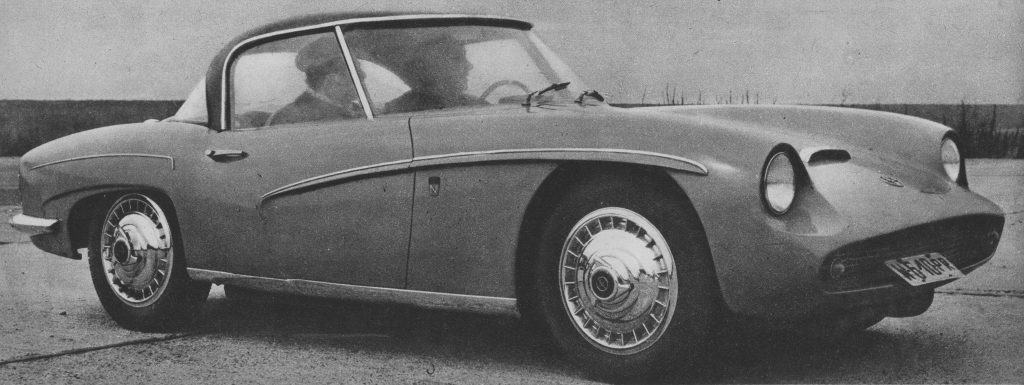The Passenger Car Factory began its operations in the late 1940s and early 1950s. However, many prototypes never made it to mass production
The FSO Ogar LS, with its modern styling, was intended to be a sports car. Its design was based on the Fiat 125p. The then futuristic body was accompanied by electrically retractable headlights and large protruding bumpers. The body was made of epoxy resin and fiberglass, and the wheels were made of light alloy. The FSO Ogar LS was designed for four people, and despite positive reviews, the competing Polonez went into production. The only prototype of this three-door car was built in 1977. Why did it lose to Polonez? First of all, there was no demand for a sports car on the market at that time. Today, we can see the Ogar prototype in the Automotive Museum in Warsaw, where it is currently located.
This car was supposed to replace the structurally obsolete Fiat 125p, which was far from Western European standards. It was to be a modern solution for those times, technologically and financially adjusted to the needs of the market. The design of this front-wheel drive five-door hatchback was ready already in 1982 and its official presentation took place in 1986 at the now defunct 10th Anniversary Stadium in Warsaw. FIAT was to be the foreign partner, which was to support the production of the Wars, but all talks broke down in 1988. The modern silhouette, ergonomic interior and good performance meant that the car received only positive reviews. Despite this, work on the project was unfortunately discontinued. The reason? Prosaic – lack of sufficient funds.

An interesting example of a model from the Passenger Car Factory is the Syrena Sport. This prototype was never intended to go into series production, but only to demonstrate the considerable capabilities of the factory – stylistic and technical, which would serve to modernize the classic Syrena. A four-stroke, two-cylinder boxer engine was used here. The chassis was based on a self-supporting floorboard, instead of the stringer frame characteristic of the classic Syrena
The Sport version featured FSO’s first ever underfloor gear shifting system and a hydraulic clutch drive, which caused considerable problems during test drives. The only FSO Syrena Sport prototype was red in color. The history of the Syrena Sport is extremely interesting. Its presentation during the May Day parade did not please Władysław Gomułka, who considered it too capitalistic. The car was therefore destroyed by a committee

This prototype, with a two-door body, could accommodate four passengers. Its advantage was a large trunk, as for a car of this class, and relatively good visibility in all directions. A well-known disadvantage of this model were the rear leaf springs, which protruded beyond the body contour. The design was based on the model of the Polish Fiat 125p – in comparison to the latter, the width of the tyres was increased, the steering wheel was reduced, and the engine used was more powerful. The top speed here exceeded 170 km/h
Bold and unprecedented for those times body design and modern construction solutions surprised even specialists. Many inspirations came from Italian car design. The sporty nature of the car was emphasized by the light-alloy wheels and low-profile tires. The car had a lot of innovative solutions – a single windshield wiper or a toned-down interior. So why did it not go into production? FSO focused on improving the Fiat 125p. Today, the only prototype of the Fiat 125p Coupé can be found in the Automotive Museum in Warsaw.